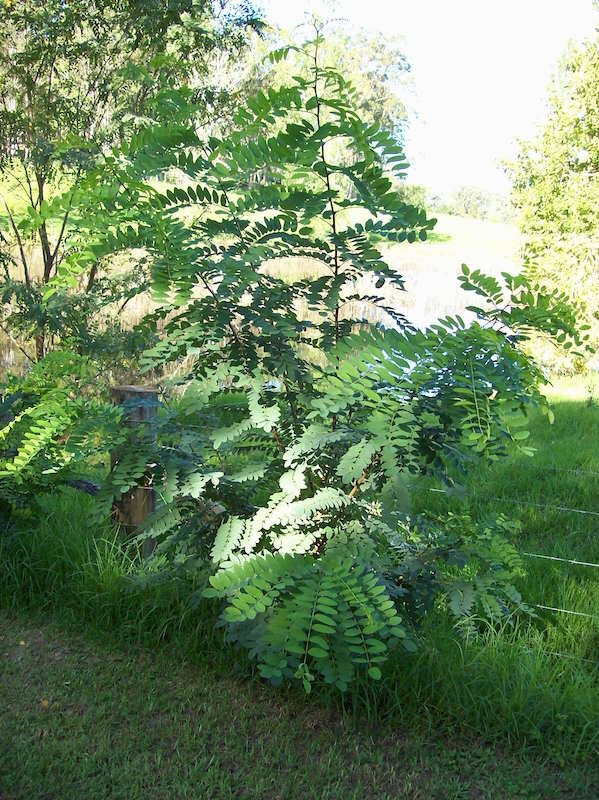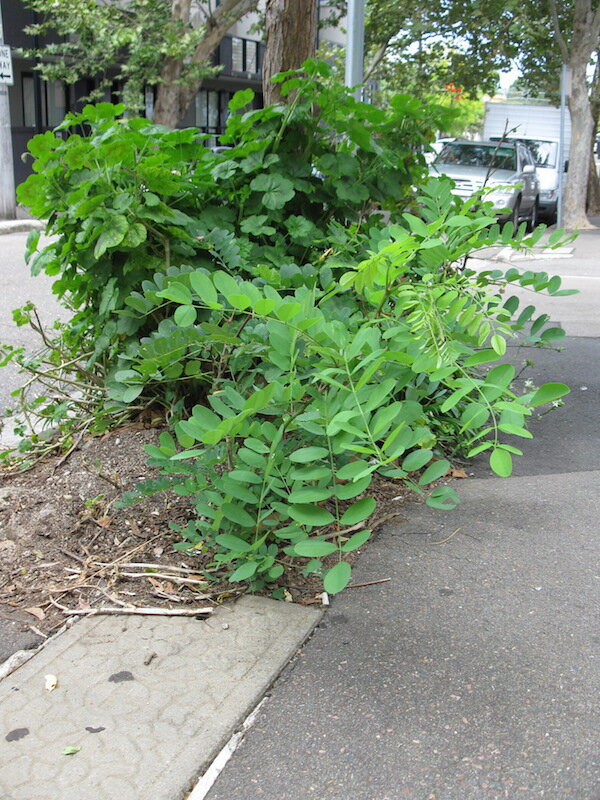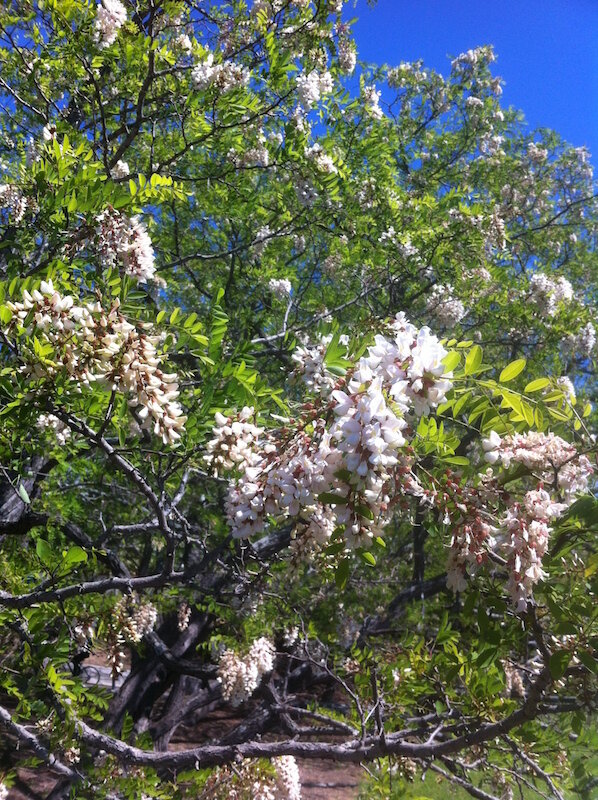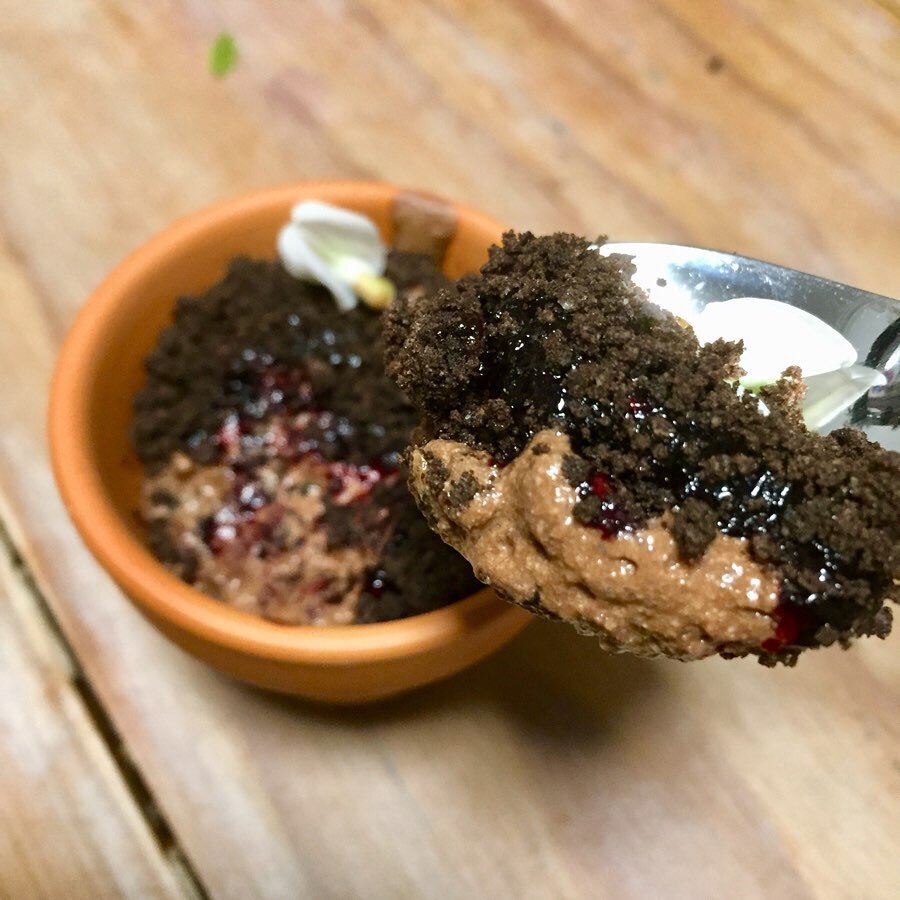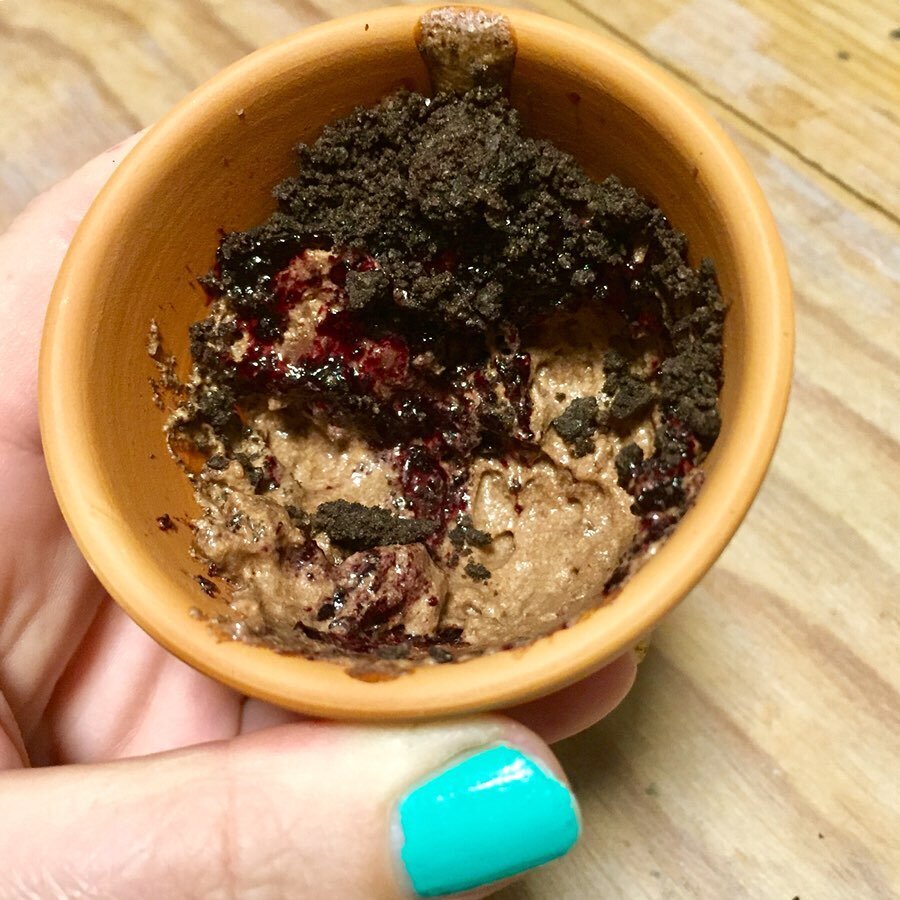How to harvest and eat Robinia flowers
This is it, the Robinia moment. It only comes once a year and it lasts for a two-three weeks period in early spring. Just as the leaves of this common deciduous come out, so do the flowers: grapes of sweet-scented deliciousness.
Here in South Eastern Australia, that moment is now.
Easy to recognise in our urban environments as they are often used as street trees, garden features and in landscaping projects as the tree is very strong, can take severe pruning, can withstand highly impacted environments and has very attractive foliage and form.
The common tree you would find is the cultivar - that means created through selective breeding- Golden Robinia, and often pruned as a lollipop.
There are also wild ones, called Black locust - Robinia pseudo-acacia - naturalised in temperate environments all over the world.
In Italy, we use the timber for fence posts, tools and saltmarshes piles as the wood is very hard and resistant to rot. It also burns at high heat while produces low smoke, so we used the branches and the rest of the tree as firewood all through the year in our home stove. It is a regular useful tree in northern Italy’s farm life, but also, for two weeks only edible.
The leaves and seeds are poisonous so only eat the flowers, and they are oh-so-yummy.
Below a simple recipe of Robinia Flowers Fritters from the excellent guys at Vegan on Board, enjoy!!
INGREDIENTS
• 1/2 cup (60 g) plain flour
• 1/2 tsp (0.5 tsp) baking powder optional
• 1/2 cup (120 ml) beer
• 10-12 (10 ) acacia flowers freshly picked
• 1 tbsp brown sugar
• 1/2 (0.5 ) lemon
• vegetable oil for frying
INSTRUCTIONS
Shake and inspect your acacia flowers to remove any little bugs.
Make the batter by combining flour (baking powder if using) and beer.
Whisk throughly until smooth, you should have a runny, slightly thick batter.
Holding the stalk dip the flowers in the batter and let any excess run off.
Heat up a large frying pan, with enough oil in it to cover the base.
You can test the oil is hot enough by dripping a bit of batter in and it will fizz and start to brown when it’s ready.
Fry the fritters on a medium/high heat, until the underside is golden brown, turn them over and repeat.
Add more oil if you need to cook another batch.
Best eaten when very soon after cooking. Sprinkle with brown sugar and a drizzle of lemon. Enjoy your delicious mouthful of acacia flower goodness!
NOTES Don’t eat the stalks, you can just pull them out easily when the fritters are cooked.
I love them raw, straight off the tree and as decoration to fun desserts, see below what we’ve presented to some lucky guests at one of our Forage to Feast events.
Completely edible flower pot. Well except for the terracotta pot of course.
When @theweedyone came back to Forage to Feast HQ yesterday with delicious Golden Robinia from a nearby Petersham street tree it was an inspiration to serve up a course with a Heston Blumenthalesque twist. Usually, our rich chocolate mousse is served in a glass with candied Illawarra plum but we’ve swapped out the glass for mini terracotta pots, added a layer of oh so sweet Mulberry and rose syrup (because we have bucketloads of mulberries here in Sydney at the mo), made a crunchy soil out of crushed Choccy cookies and planted our sweet tasting Robinias. YUM! Such a pretty dessert and oh so delicious too.
Some people talk about making cold infusions, Wikipedia talks of Robinia Flower Jams in Romania, and a maybe someone should have a go at enfleurage of this seasonal treat.
Do you have recipes? How do you like them?
Further resources
Wikipedia > https://en.wikipedia.org/wiki/Robinia_pseudoacacia
Plant For a Future > https://pfaf.org/user/Plant.aspx?LatinName=Robinia+pseudoacacia
Eat the Weeds > http://www.eattheweeds.com/tag/robinia-pseudoacacia/
Plant of the World Online> http://www.plantsoftheworldonline.org/taxon/urn:lsid:ipni.org:names:30034699-2
Turin Mumma> https://turinmamma.com/2018/05/15/robinia-flower-fritters-a-transient-spring-time-treat/
Weeds Australia> https://profiles.ala.org.au/opus/weeds-australia/profile/Robinia%20pseudoacacia;jsessionid=830295506357AD444C91B70BF2670638
Speciality trees> https://www.specialitytrees.com.au/trees/robinia-pseudoacacia-frisia-pxx2h
Weeds of Australia> https://keyserver.lucidcentral.org/weeds/data/media/Html/robinia_pseudoacacia.htm
This article is an extract form the upcoming publication Eat Weeds, due to be released by Thames&Hudson Australia in early 2022.
The publication has been supported by the City of Sydney via its Creative Fellowship Fund.





